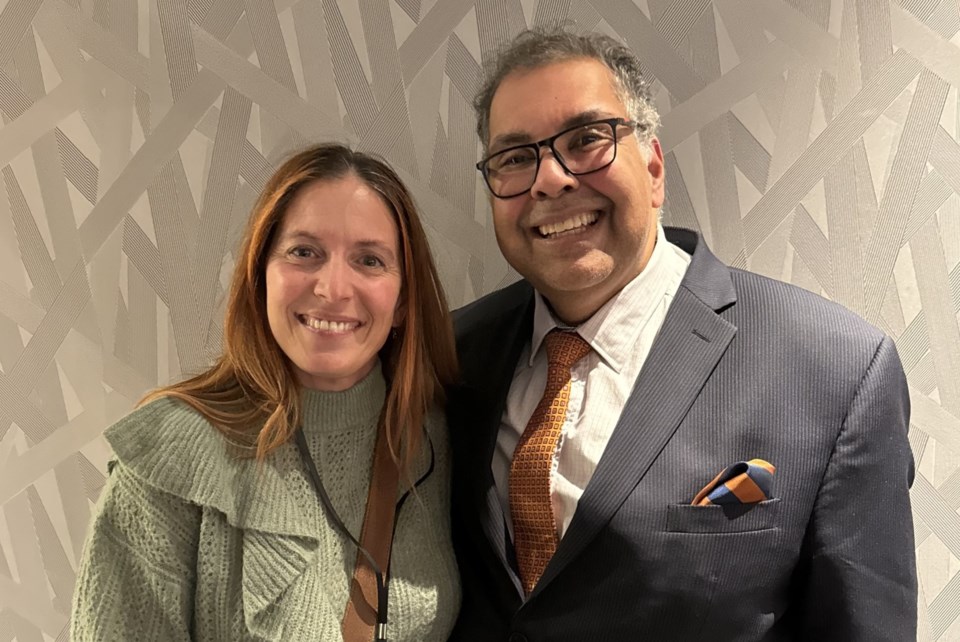Rural communities have been in the political spotlight throughout Western Canada.
The Alberta NDP rural caucus met in Sylvan Lake on Nov. 2 for its annual general meeting, where the group celebrated the party's rural roots and discussed the way forward.
According to Sheila Stacey, president of the Highwood NDP constituency association and rural caucus executive member, the meeting was a productive one for fellow New Democrats.
"The theme was celebrating our rural roots, and I think it's still appropriate to what we've seen in our Alberta elections as well as the recent Saskatchewan provincial election as well," she said.
The Saskatchewan provincial election in October demonstrated the political divide between urban and rural ridings, with the Saskatchewan NDP sweeping nearly all seats in the urban centres of Regina and Saskatoon but losing the election to the incumbent conservative Saskatchewan Party, which won the vast majority of rural ridings and subsequently secured a fifth term in government.
The situation in Alberta is no different, with the party forming the province's largest-ever Official Opposition in 2023 by taking every seat in Edmonton and the majority in Calgary but failing to make significant inroads in rural Alberta. The NDP holds only one rural seat, Banff-Kananaskis.
"It showed some similarities to what we're seeing here in Alberta with the political landscape and brings up issues of why and how and why that transpired," said Stacey.
Much like the Saskatchewan NDP, the Alberta NDP traces its roots back to the democratic socialist Co-operative Commonwealth Federation, founded in 1932.
At the time, the party's main focus was on workers, with labour-friendly proposals including government-regulated wages, unemployment insurance and universal health care being deemed radical at the time.
"Both Saskatchewan and Alberta's NDP have farmers in the roots of their party, and so in order to win over these smaller rural communities, we're going to have to acknowledge that past, recognize it in a genuine manner," said Stacey.
"Maybe we need to get back to our roots to truly connect with everyday Albertans."
According to Stacey, there are many issues the party could highlight in its platform to better resonate with rural constituents, including energy, the electricity grid, the exodus of youth from rural communities due to a perceived lack of opportunity, and an overall lack of access to education and social services.
"Sometimes there's differentiation between what our rural caucus thinks and and what our party goes ahead with, which is what we saw a little bit of during the last election," she said. "We're hoping with new leadership that we'll have a little bit more openness to the input of our rural caucus."
Before , Naheed Nenshi spoke on his rural priorities during .
"President Obama famously in 2008 had a 50-state strategy," said Nenshi, who made a similar point in a previous interview . "We have to have an 87-riding strategy, and we have to find pockets of support everywhere, because remember, outside of Calgary and Edmonton, the NDP got 35 per cent of the vote."
Nenshi, who spent some of his youth in Red Deer County, added his thoughts on the terminology for towns and cities outside of Alberta's urban centres.
"You'll notice I haven't said 'rural Alberta,'" he said. "I actually am trying not to use that term, because I don't think that a nurse in Red Deer thinks of herself as rural. I don't think that a oilfield worker in Fort McMurray thinks of themselves as rural. Certainly the people in Okotoks probably don't think of themselves as rural Albertans."
Stacey noted that Nenshi's preference of terms like "communities of all sizes" may not go over well with rural constituents.
"I'm not sure how well that will resonate in our smaller, more rural communities, which really do feel like there is a rural-urban divide," she said.
The potential for an NDP win in Highwood has not gone unnoticed by Nenshi.
"Highwood, just southwest of Calgary, the NDP received 30 per cent in that riding, which is way more than they've ever received before," he said. "It also means that one-third of people in a very stereotypical conservative riding in southern Alberta are actually interested in the New Democrat message."
Stacey acknowledged that making inroads in ridings like Highwood is not something that happens overnight.
"Our more rural, isolated ridings really, really need to be connected in a more personal, genuine way with our party, and and I think it's not going to be done in the short term," she said. "That's going to take time and work, and building trust and relationships with our more rural constituents.
"We have a unique opportunity to build those relationships because in contrast, the UCP... they've taken advantage of the power that's been vested in them, and we have the ability to provide a better way, a better alternative, and and to remind folks of our rural roots."




